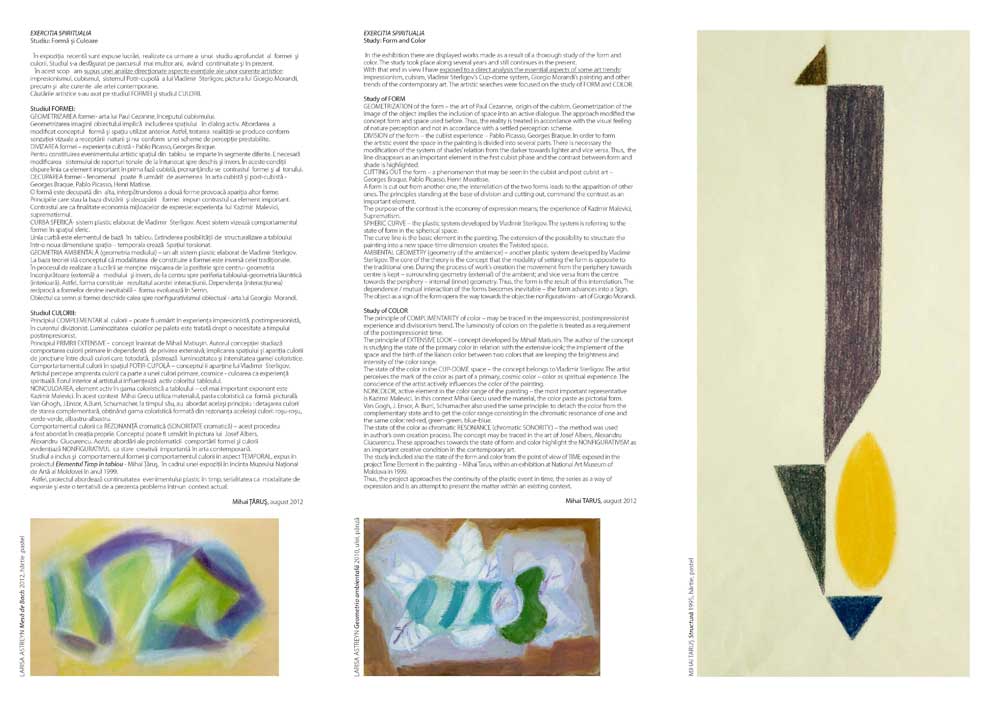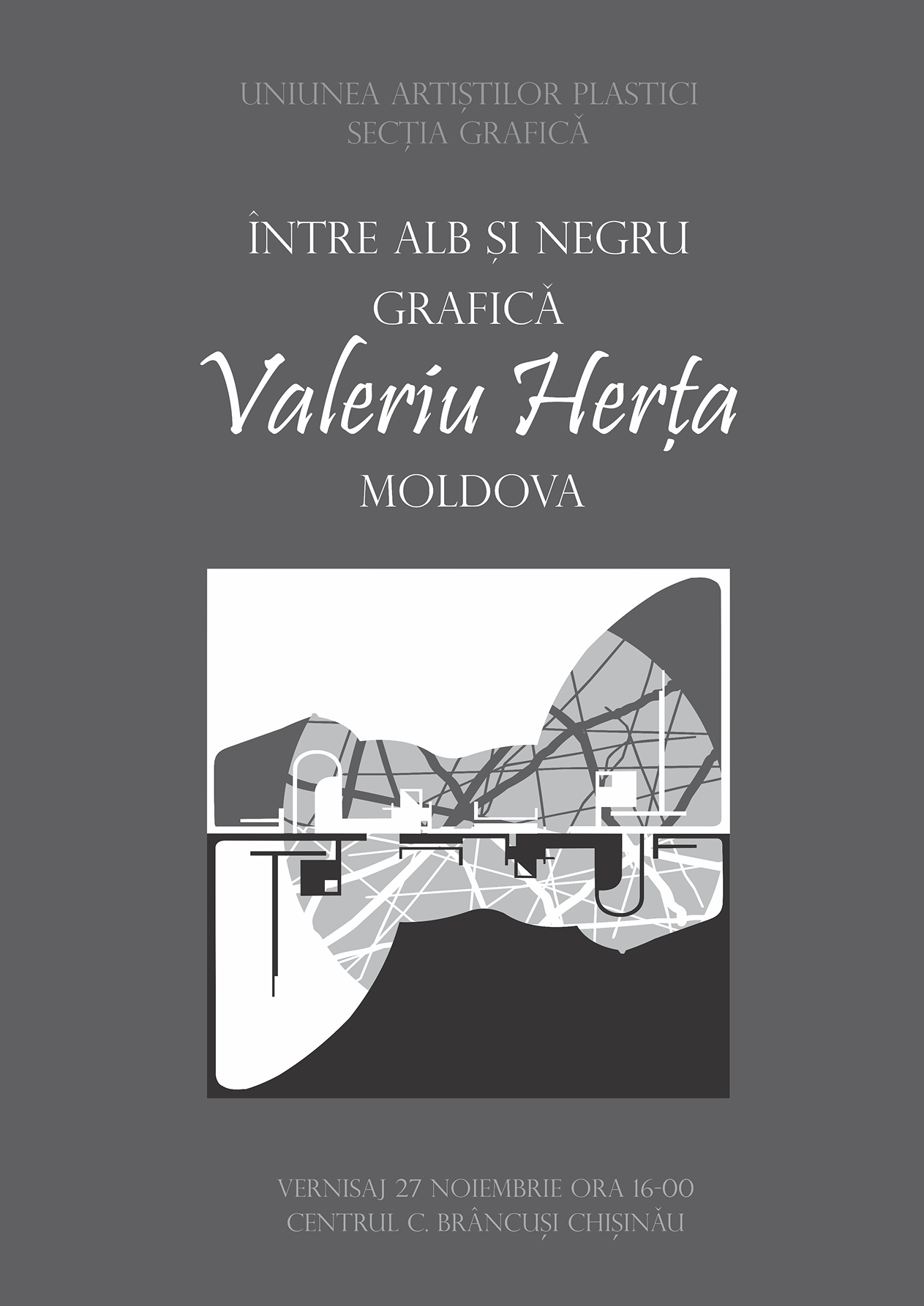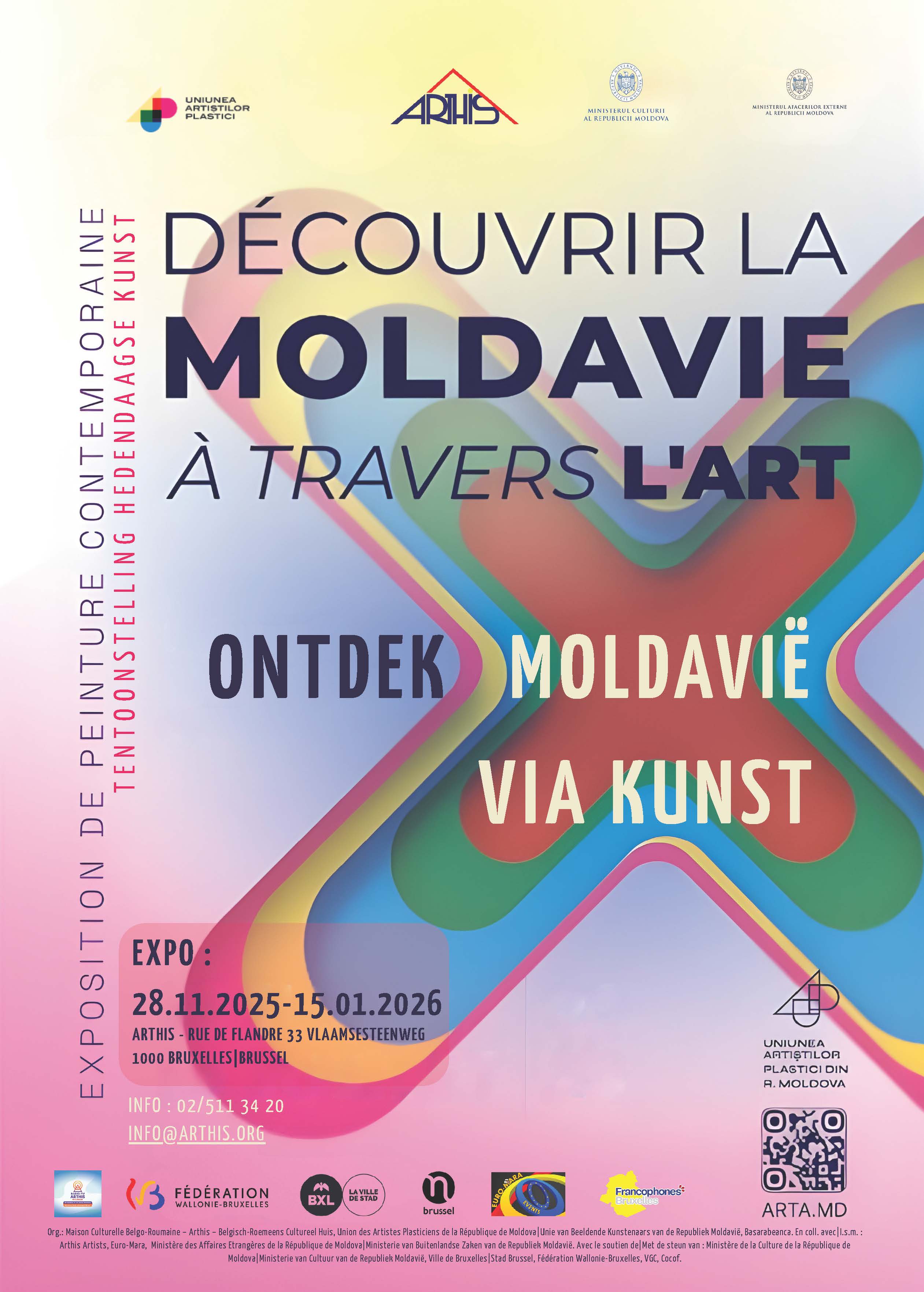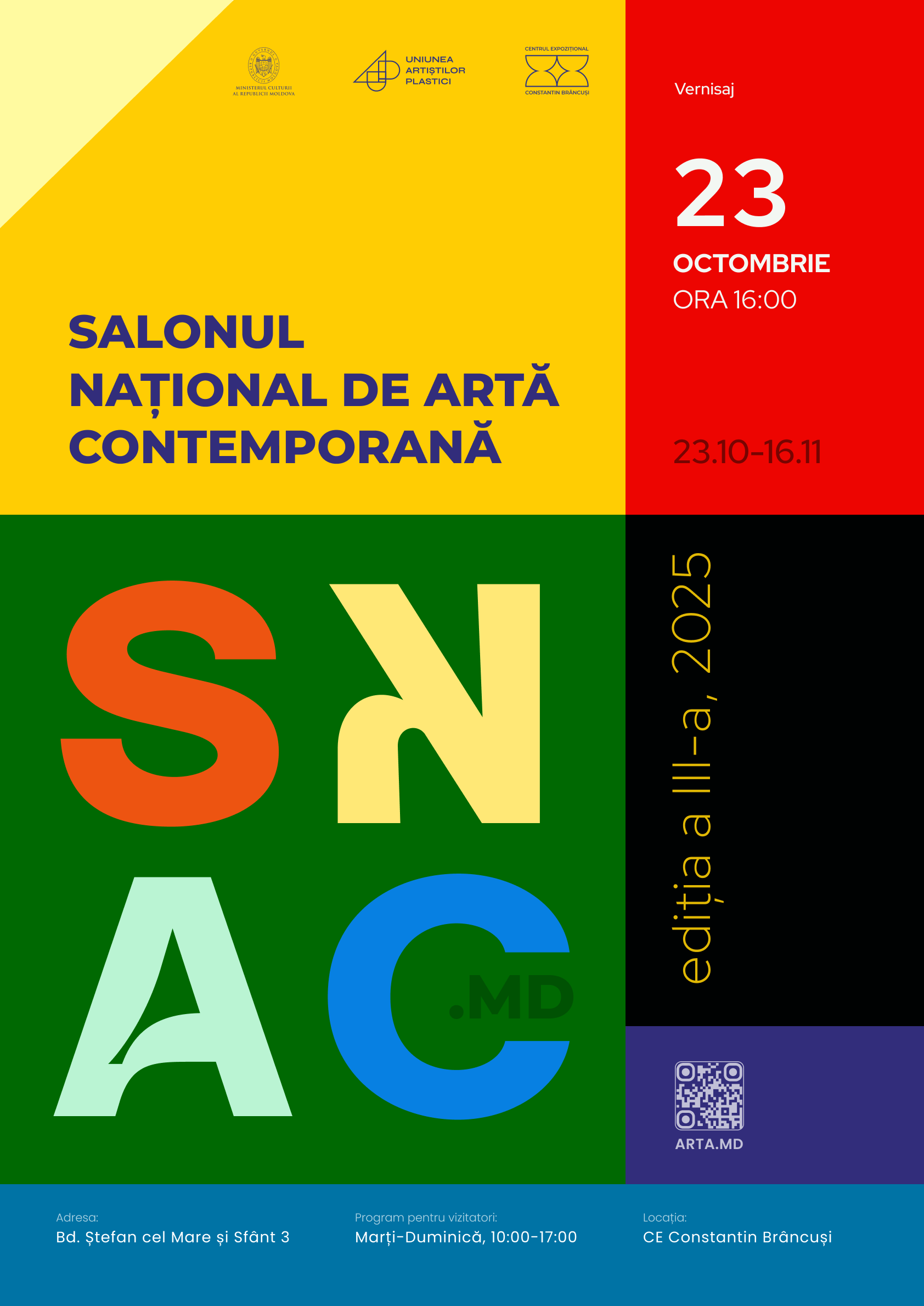 vernisaj: 16 August 2012, ora 15:00
vernisaj: 16 August 2012, ora 15:00locaţie: Muzeul Naţional de Artă al Moldovei (www.mnam.md), Galeria Parter
Chişinău, str. 31 August 1989, 115
harta


EXERCITIA SPIRITUALIA Studiu: Formă şi Culoare
în expoziţia recentă sunt expuse lucrări, realizate ca urmare a unui studiu aprofundat al formei şi culorii. Studiul s-a desfăşurat pe parcursul mai multor ani, având continuitate şi în prezent.
în acest scop am supus unei analize directionate aspecte esenţiale ale unor curente artistice: impresionismul, cubismul, sistemul Potir-cupolă a lui Vladimir Sterligov, pictura lui Giorgio Morandi, precum şi alte curente ale artei contemporane. Căutările artistice s-au axat pe studiul FORMEI şi studiul CULORII.
Studiul FORMEI:
GEOMETRIZAREA formei- arta lui Paul Cezanne, începutul cubismului.
Geometrizarea imaginii obiectului implică includerea spaţiului în dialog activ. Abordarea a modificat conceptul formă şi spaţiu
utilizat anterior. Astfel, tratarea realităţii se produce conform senzaţiei vizuale a receptării naturii şi nu conform unei scheme de
percepţie prestabilite.
DIVIZAREA formei - experienţa cubistă - Pablo Picasso, Georges Braque.
Pentru constituirea evenimentului artistic spaţiul din tablou se imparte în segmente diferite. E necesară modificarea sistemului
de raporturi tonale de la întunecat spre deschis şi invers. în aceste condiţii dispare linia ca element important în prima fază cubistă,
pronunţându-se contrastul formei şi al tonului.
DECUPAREA formei - fenomenul poate fi urmărit de asemenea în arta cubistă şi post-cubistă - Georges Braque, Pablo Picasso,
Henri Matisse.
O formă este decupată din alta, interpătrunderea a două forme provoacă apariţia altor forme.
Principiile care stau la baza divizării şi decupării formei impun contrastul ca element important.
Contrastul are ca finalitate economia mijloacelor de expresie: experienţa lui Kazimir Malevici, suprematismul.
CURBA SFERICĂ- sistem plastic elabo rat de Vladimir Sterligov. Acest sistem vizează comportamentul formei în spaţiul sferic.
Linia curbă este elementul de bază în tablou. Extinderea posibilităţii de structuralizare a tabloului într-o noua dimensiune spatio
- temporala crează Spaţiul torsionat.
GEOMETRIA AMBIENTALĂ (geometria mediului) - un alt sistem plastic elaborat de Vladimir Sterligov. La baza teoriei stă conceptul că modalitatea de constituire a formei este inversă celei tradiţionale. în procesul de realizare a lucrării se menţine mişcarea de la periferie spre centru- geometria înconjurătoare (externă) a mediului şi invers, de la centru spre periferia tabloului-geometria lăuntrică (interioară). Astfel, forma constituie rezultatul acestei interacţiunii. Dependenţa (interacţiunea) reciprocă a formelor devine inevitabilă - forma evoluează în Semn. Obiectul ca semn al formei deschide calea spre nonfigurativismul obiectual - arta lui Georgio Morandi.
Studiul CULORII:
Principiul COMPLEMENTAR al culorii - poate fi urmărit în experienţa impresionistă, postimpresionistă, în curentul divizionist.
Luminozitatea culorilor pe paleta este tratată drept o necesitate a timpului postimpresionist.
Principiul PRIVIRII EXTENSIVE - concept înaintat de Mihail Matiuşin. Autorul concepţiei studiază comportarea culorii primare în
dependenţă de privirea extensivă; implicarea spaţiului şi apariţia culorii de joncţiune între două culori care, totodată, păstrează
luminozitatea şi intensitatea gamei coloristice.
Comportartamentul culorii în spaţiul POTIR-CUPOLĂ - conceptul îi aparţine lui Vladimir Sterligov. Artistul percepe amprenta culorii
ca parte a unei culori primare, cosmice - culoarea ca experienţă spirituală. Forul interior al artistului influenţează activ coloritul
tabloului.
NONCULOAREA, element activ în gama coloristică a tabloului - cel mai important exponent este Kazimir Malevici. în acest context
Mihai Grecu utiliza materialul, pasta coloristică ca formă picturală. Van Ghogh, J.Ensor, A.Burri, Schumacher, la timpul său, au
abordat acelaşi principiu : detaşarea culorii de starea complementară, obţinând gama coloristică formată din rezonanţa aceleiaşi
culori: roşu-roşu, verde-verde, albastru-albastru.
Comportamentul culorii ca REZONANŢĂ cromatică (SONORITATE cromatică) - acest procedeu a fost abordat în creaţia proprie.
Conceptul poate fi urmărit în pictura lui Josef Albers, Alexandru Ciucurencu. Aceste abordări ale problematicii comportării formei
şi culorii evidenţiază NONFIGURATIVUL ca stare creativă importantă în arta contemporană.
Studiul a inclus şi comportamentul formei şi comportamentul culorii în aspect TEMPORAL, expus în proiectul Elementul Timp în
tablou - Mihai Ţăruş, în cadrul unei expoziţii în incinta Muzeului Naţional de Artă al Moldovei în anul 1999.
Astfel, proiectul abordează continuitatea evenimentului plastic în timp, serialitatea ca modalitate de expresie şi este o tentativă de
a prezenta problema într-un context actual.
EXERCITIA SPIRITUALIA
Study: Form and Color
In the exhibition therearedisplayed works madeasa resultof a thorough study of the form and color. The study took place along several years and still continues in the present.
With that end in view I have exposed to a direct analvsis the essential aspects of some art trends: impressionism, cubism, Vladimir Sterligov's Cup-dome system, Giorgio Morandi's painting and other trends of the contemporary art. The artistic searches were focused on the study of FORM and COLOR.
Study of FORM
GEOMETRIZATION of the form -the art of Paul Cezanne, origin of the cubism. Geometrization of the imageof theobject implies
the inclusion of space into an active dialogue.The approach modified the conceptform and space used before.Thus, the reality is
treated in accordance with the visual feeling of nature perception and not in accordance with a settled perception scheme.
DIVISION of the form - the cubist experience - Pablo Picasso, Georges Braque. In order to form the artistic event the space in the
painting isdivided into several parts.There is necessary the modification of the system of shades'relation from thedarkertowards
lighterand vice versa.Thus, the linedisappearsas an important element in the first cubist phase and the contrast between form
and shade is highlighted.
CUTTING OUT the form - a phenomenon that may be seen in the cubist and post cubist art - Georges Braque, Pablo Picasso, Henri
Mwatisse.
Aform is cut out from anotherone, the interrelation of the twoforms leads totheapparition of other ones.The principles standing
at the base of division and cutting out, command the contrast as an important element.
The purpose of the contrast istheeconomy of expression means;the experience of Kazimir Malevici, Suprematism.
SPHERICCURVE-the plastic system developed by Vladimir Sterligov. The system is referring tothe state of form in the spherical
space.
The curve line is the basic element in the painting. The extension of the possibility to structure the painting into a newspace-time
dimension creates theTwisted space.
AMBIENTAL GEOMETRY (geometry of the ambience) -another plastic system developed byVladimirSterligov.Thecoreofthe
theory is the concept that the modality of setting the form isopposite tothe tradiţional one. During the processof work's creation
the movementfrom the periphery towards centre is kept-surrounding geometry (externai) of the ambient; and viceversa from
the centre towards the periphery- internai (inner) geometry. Thus, the form isthe resultof this interrelation.The dependence/
mutual interaction of the forms becomes inevitable - the form advances into a Sign.
The object as a sign of the form opens the way towards the objective nonfigurativism - art of Giorgio Morandi.
Study of COLOR
The principie of COMPLIMENTARITYof color- may be traced in the impressionist, postimpressionist experience and divisionism
trend. The luminosity of colors on the palette is treated as a requirement of the postimpressionist time.
The principie of EXTENSIVE LOOK - concept developed by Mihail Matiuşin. The author of the concept is studying the state of the
primary color in relation with the extensive look;the implementofthe space and the birth of the liaison color between two colors
that are keeping the brightness and intensity of the color range.
The state of the color in the CUP-DOME space -the concept belongsto Vladimir Sterligov. The artist perceivesthe markof the
color as part of a primary, cosmic color-color as spiritual experience.The conscience ofthe artist activelyinfluences the color of
the painting.
NONCOLOR, active element in the color range ofthe painting - the most important representative is Kazimir Malevici. In this
context Mihai Grecu used the material, the color paste as pictorial form. Van Gogh, J. Ensor, A. Burri, Schumacher also used
the same principie: to detach the color from the complementary state and to get the color range consisting in the chromatic
resonance of one and the same color: red-red, green-green, blue-blue.
The state ofthe color as chromatic RESONANCE (chromatic SONORITY) - the method was used in author's own creation process.
The concept may be traced in the art of Josef Albers, Alexandru Ciucurencu. These approaches towards the state of form and color
highlight the NONFIGURATIVISM as an important creative condition in the contemporary art.
The study included also the state ofthe form and color from the point of view ofTIME exposed in the projectTime Element in the painting
- Mihai Tarus, within an exhibition at National Art Museum of Moldova in 1999.
Thus, the project approaches the continuity ofthe plastic event in time, the series as a way of expression and isan attemptto present the matter within an existing context.
Mihai TARUS, august 2012







